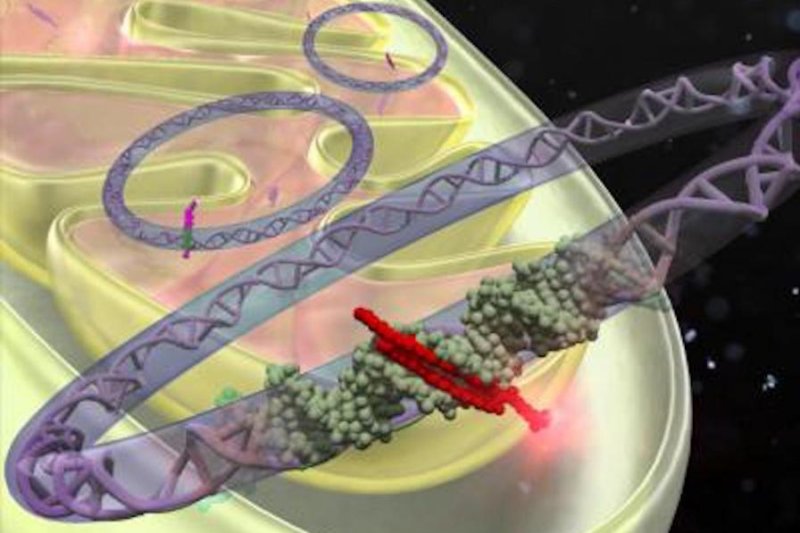Scientists have designed a new synthetic compound to target disease-causing genes in the cell's mitochondria. Photo by Kyoto University iCeMS
July 11 (UPI) -- Scientists in Japan have successfully silenced disease-causing genes inside mitochondria, the cell's powerhouses, using a novel synthetic compound.
Most DNA is found inside the cell's nucleus. Researchers have previously deployed pyrrole-imidazole polyamides, or PIPs, a DNA-reading and gene-silencing compound, inside cell nuclei. But some DNA exists inside mitochondria, where PIPs have been previously unable to access.
Scientists at Kyoto University attached a mitochondria-penetrating peptide, or MPP, to a PIP, allowing the compound to overpower the mitochondria's energy barrier.
Researchers designed their so-called MITO-PIP to block the binding site for mitochondrial transcription factor A, or TFAM. TFAM controls the mitochondria's metabolic processes and plays an important role in the transcription of the gene ND6.
Researchers found different concentrations of their novel compound, TFAM-inhibiting MITO-PIP, reduced ND6 expression between 60 and 90 percent.
ND6 is associated with several mitochondrial defects, including central vision loss, muscle weakness, seizures and learning difficulties.
Scientists hope their breakthrough -- detailed this week in the Journal of American Chemical Society -- will inspire the development new gene therapies for mitochondrial diseases and defects.
"We plan to develop an advanced version of MITO-PIPs that can identify and localize only inside diseased mitochondria," lead researcher Ganesh Pandian Namasivayam, from Kyoto University's Institute for Integrated Cell-Material Science, said in a news release.















